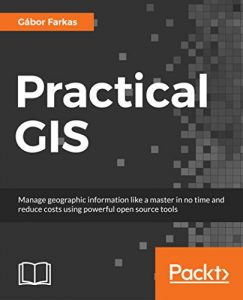Key Features
- This easy-to-follow guide allows you to manage and analyze geographic data with ease using open source tools
- Publish your geographical data online
- Build GIS solutions using web APIs
- Learn the basics of geoinformatics in a practical way by solving problems
Book Description
The most commonly used GIS tools automate tasks that were historically done manually—compiling new maps by overlaying one on top of the other or physically cutting maps into pieces representing specific study areas, changing their projection, and getting meaningful results from the various layers by applying mathematical functions and operations. This book is an easy-to-follow guide to use the most matured open source GIS tools for these tasks.
We’ll start by setting up the environment for the tools we use in the book. Then we will learn how to work with QGIS in order to generate useful spatial data. We will learn the basics of queries, data management, and geoprocessing.
After that we will start to practice our knowledge on real world examples. We will solve various types of geospatial analyses with various methods. We will start with basic GIS problems by imitating the work of an enthusiastic real estate agent, and continue with more advanced, but typical tasks by solving a decision problem. Finally, we will learn how to publish our data (and results) on the web. We will publish our data with QGIS Server and GeoServer, and create a basic web map with the API of the lightweight Leaflet web mapping library.
What you will learn
- Collect GIS data for your needs
- Store the data in a PostGIS database
- Exploit the data using the power of the GIS queries
- Analyze the data with basic and more advanced GIS tools
- Publish your data and share it with others
- Build a web map with your published data
- Put all the pieces together to build an elegant GIS solution using an open source web API
About the Author
Gábor Farkas is a PhD student in the University of Pécs's Institute of Geography. He holds a master's degree in geography, although he moved from traditional geography to pure geoinformatics in his early studies. He often studies geoinformatical solutions in his free time, keeps up with the latest trends, and is an open source enthusiastic. He loves to work with GRASS GIS, PostGIS, and QGIS, but his all time favorite is web development, and open source web mapping technologies, which mostly covers his main research interest.






